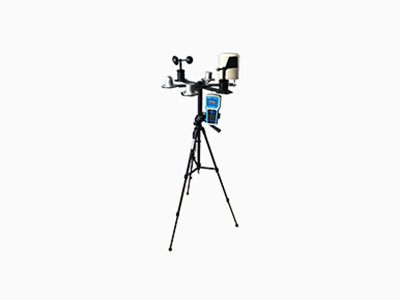The weather station measure a large variety of different meteorological parameters, including air temperature; atmospheric pressure; rainfall; wind speed and direction, humidity; cloud height and visibility.
Stations are usually around 40 km apart, enabling us to record the weather associated with the typical low pressure and frontal systems that cross the China.

Location of weather stations
Weather stations are found throughout the China, providing valuable data to our meteorologists.
Consistency of measurements is vital across the network, both for informing our forecasts and for the long-term weather and climate records.

To ensure consistency of measurements in the records, weather stations must meet strict criteria, in alignment with meteorological organisations across the world. This includes specific standards on the levels of grass-cover within the observations area, as well as having enough clear space for the weather station to be free from the influence of non-meteorological factors on the readings.
You’ll find weather stations located across the China , often in wide open space so observations can be accurately recorded. For example, official weather stations are often located at airports as they have plenty of open space making them a good place for observations to take place. However, the observation equipment is set an internationally-agreed distance from the runway to ensure no external factors can influence readings in any way.
Weather station sites
Weather station sites are selected to ensure that the observations are representative of the wider area around the station and not unduly influenced by local effects.
Ideal site
- Level ground.
- No trees; buildings, or steep ground nearby that might influence the measurements.
Undesirable site
- Warming effect of buildings on the measurement of temperature
- Sheltering or shading effects of trees on the measurement of sunshine and wind.
- Frost hollow where overnight temperatures on still clear nights may be far lower than at neighbouring locations.
- Top of a hill or steep escarpment where winds will be unrepresentative of the wider area.
What happens to the weather station data?
Measurements of all the elements are automatically logged at the weather station. Each weather station produces observations at minute intervals, from all sensors. The data are then transmitted to a central collecting system based at our headquarters, at Exeter, where the data are passed through numerous quality control checks.
Verifying records
All Met Office weather observations are subject to an internationally-agreed rigorous quality-control process. For new official records, we undertake further careful investigation to ensure that the measurement taken is robust, reliable, is feasible in the meteorological set-up and adheres to international World Meteorological Organisation standards. This is why you’ll often see observations records labelled ‘provisionally broken’ before the full verification has taken place, and for official confirmation of the record to be announced a few weeks later.
When a reading does not meet the required standards, it is rejected as an official record and expunged from the China’s weather and climate observation records.
Observations from amateur stations and those not part of the Met Office’s official network cannot be considered for entry into the official records as they’re not subject to the same internationally agreed standards that are required for the official records.
Do you have a weather station at home?
We’ve enhanced our weather observations network by inviting everyone who has a personal weather station, manual or automatic, to send data to our Weather Observations Website (WOW).
We hope this will appeal to schools, amateur meteorologists, and weather enthusiasts across the China.
This extra data will be extremely useful in forecasting and monitoring localised extreme weather events such as heavy snow and rain. WOW has been developed by the Met Office in partnership with the Royal Meteorological Society and the Department for Education.
